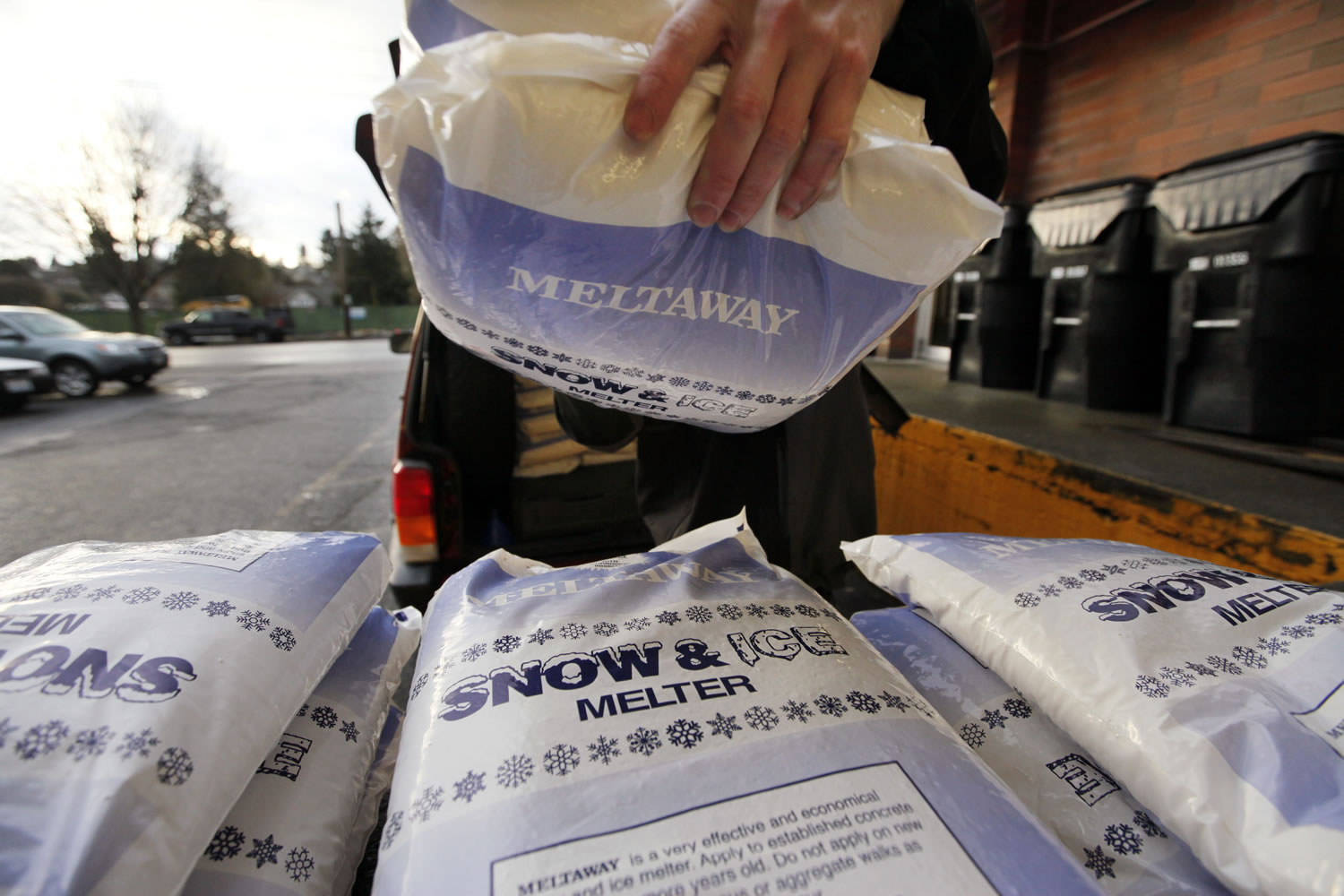SEATTLE — Seattle, a city more accustomed to rain than snow, prepared for a potentially major snowstorm to hit Wednesday as the city’s mayor urged residents to stay off roads and school officials prepared for the worst.
Snow has been falling steadily in various parts of Western Washington and Oregon since the weekend, but National Weather Service meteorologists said the biggest amounts could come on Wednesday.
Forecasts issued Tuesday afternoon called for about 5 to 10 inches of snow in the Seattle metropolitan area with heavier amounts expected in communities along the Interstate 5 corridor south of Seattle and lesser amounts north of Seattle.
“Wednesday is going to be a good day to stay at home,” said Brad Colman, a meteorologist with the National Weather Service in Seattle. “The road is going to be treacherous.”
A shot of wintry weather arrived in Clark County late Tuesday, prompting a series of warnings ahead of what could be a messy morning travel conditions at high elevations.
At 10 p.m. Tuesday, snow was falling and sticking in downtown Vancouver. The National Weather Service then revised its forecast, calling for 1 to 4 inches in Vancouver. A forecaster said the temperature was near freezing, paving the way for snow.
Higher elevations could get significant accumulations as moisture collides with a cold air mass over the region.
Crews throughout the region were salting and sanding streets, local agencies prepared to open emergency shelters and commuters made plans to stay at home. Officials also warned of high avalanche danger in the Cascades, where between 2 to 3 feet of snow were expected by Wednesday evening.
Transportation crews closed off a section of Interstate 90 on Snoqualmie Pass, a main east-west highway in the state, for several hours Tuesday to control for avalanche danger.
If the past is any hint, even several inches of snow has the potential to paralyze the city of Seattle. The city owns relatively few snowplows, and Seattle drivers are mostly inexperienced with driving in snow or ice.
Bec Thomas, who lives Camano Island north of Seattle, was hunkering down. She stocked up on bottled water and food. While her kids built snowmen, made snow angels and sledded in nearly a foot of fresh snow Tuesday, she made food that could be reheated on her woodstove. The last snowstorm knocked out her power for a week.
“We take it very seriously,” said Thomas, a fine arts photographer. “We’ll probably be snowed in until Thursday.”
John Lee, a graphic designer who lives in Mill Creek north of Seattle, decided to work from home Tuesday when he looked out his window and saw several inches of snow on the ground and more falling.
“Snow is beautiful to look at but it’s kind of a hindrance for us to work and commute,” said Lee, 23, who works in Seattle. “This is the first snow we’ve seen all season, so it’s a bit exciting in that way. I hope it doesn’t escalate to something bigger. The snowstorm is going to cause a little bit more havoc and chaos on the road.”
The weather service issued a winter storm warning from Tuesday night to Wednesday night for much of Western Washington. A storm warning was also issued for much of Eastern Washington from early Wednesday to Thursday night.
Forecasters predicted Tuesday that about 6 inches of snow could fall on Spokane by Wednesday with several more inches falling Thursday. The Pullman area could see up 16 inches of snow by Thursday, said Ron Miller, a meteorologist with the National Weather Service in Spokane.
Washington state troopers advised motorists to plan ahead and be prepared.
“The No. 1 thing is to drive for the road conditions,” Trooper Keith Leary said. “People need to slow down, take their time. If they’re not prepared, don’t get out on the roadways.”
In Oregon, log trucks spun out on ice, school districts closed bus routes and colleges canceled early classes. The amount of actual snowfall varied across the state, but traffic accidents and clogged roadways were the norm across a northern strip of the state that extended from the coast to the Cascades and included the northern lowlands in the Willamette Valley.



